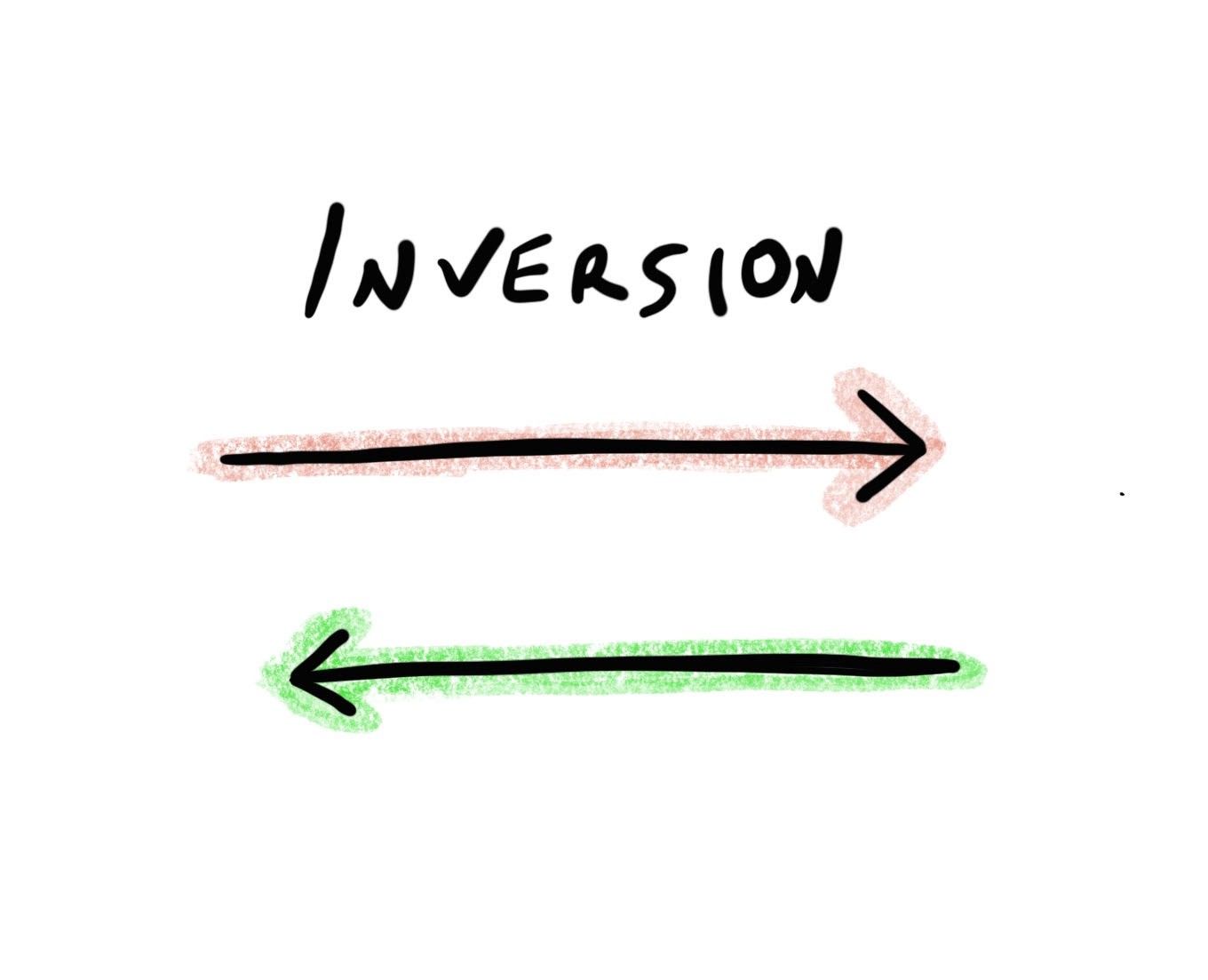Inversion: Train Your Mind To Think Dynamically
4 applications for clear thinking and better decision-making.

Questions, and how they are asked, can completely change how we look at a situation.
You can use this to your advantage to improve your thinking and decision-making.
That’s where Inversion as a mental model comes in.
At its simplest, a mental model represents someone’s thought process or a theory on how different aspects of the world work.
They shape how you reason, approach problems, and identify the information that matters.
Ultimately, the point of learning about mental models is so you can use them as frameworks to make better decisions. It’ll help you:
- Pause and avoid jumping to conclusions
- Understand the mental biases that distort your thinking
- Come up with better ideas by avoiding assumptions, and focusing on facts
There are hundreds of mental models from all disciplines, but for me, I have found Inversion to be the most practical.
One Must invert, Always Invert.
The brain behind Inversion as a mental model is Carl Jacobi, a 19th-century German mathematician with a reputation as someone who could solve especially hard and intractable problems.
His secret?
“Man muss immer umkehren.”
Translation:
”One must invert, always invert.”
Jacobi frequently used this strategy when he was stuck on a challenging math problem. Rather than continuing to look at it the same way (forwards), he would restate it in inverse (backwards). This new, creative perspective often allowed him to solve the problem more easily.
Inverting is about turning an assumption or problem upside down; working backwards; asking, “What if the opposite were true?”
Instead of asking how to do something, ask how not to do it.
It’s a powerful tool, training your mind to think dynamically. By putting a spotlight on errors and roadblocks not obvious at first glance, you can proactively think of solutions.
4 Everyday Ways To Invert
The beauty of Inversion is in its wide application, professionally and personally.
It doesn’t always need to take much brain power or time — sometimes quickly inverting the situation in your head as you’re about to make a decision can be enough.
But, let’s get practical.
How and where you can apply this in your life?
1. Run a Failure Pre-mortem
Jack Dorsey, the founder of Twitter and Square, pitched Square to VC investors with a slide titled “140 Reasons Why Square Will Fail”.
He then went on to reject each reason explaining why.
He’s starting with the end of the meeting in mind: what could be the objections to my proposal? How can I counter them from the very start?
His reasoning?
The fastest way to a yes is to tackle all the reasons they could say no.
Something similar exists in the corporate world.
Instead of doing a post-mortem review (where you discuss the results and learnings after the project is delivered), you could have a pre-mortem meeting.
Sit with your colleagues or clients, and discuss the most important goal or project you are working on. Then, fast forward 6 months and imagine the project or goal has failed.
What went wrong? What mistakes did you make? How did it fail?
In other words, think of your main goal and ask, “What could cause this to go horribly wrong?”
As a team, you’ll come up with a list of challenges and points of failure you can now develop a plan for.
You can easily apply this to your personal life as well.
Say you’re setting yourself an ambitious goal. Think through what could lead this to fail. Is it time? Goals set too high? Certain skills? Money? What can you do to prepare for that?
I’m preparing to go on a sabbatical in a couple of months. So from one day to the next, I’ll go from a full-time job in a corporate structure to no structure at all.
I’m writing down all the ways I could waste this newfound freedom.
Just a few examples:
- Lack of focus on what I want to get out of the sabbatical
- Spend most of my day reading without clear goals or action
- Get bogged down by small tasks that feel productive but don’t move the needle
- Follow and read too many sources, “planning” over “taking action.”
I’m now thinking through what I can put in place to make sure that doesn’t happen for each of these.
2. Don’t Try To Win. Just Avoid Losing.
Avoiding stupidity is easier than seeking brilliance.
Charlie Munger, billionaire business partner of Warren Buffett, is famous for this quote & philosophy.
… if you choose to win at tennis — as opposed to having a good time — the strategy for winning is to avoid mistakes. The way to avoid mistakes is to be conservative and keep the ball in play, letting the other fellow have plenty of room in which to blunder his way to defeat, because he, being an amateur will play a losing game and not know it.
Rather than trying to win, we should avoid losing.
Too often, people are focused on how to achieve success. A better way would be to consider the inverse of success instead.
Think about the kind of life you don’t want to lead or the kind of person you don’t want to be — and make sure you do everything you can to avoid that.
What would an average or miserable life look like for you? Invert, and do the opposite.
Write down the personality traits of people you don’t like being around? Invert, and train yourself to spot when you are being that way.
Are there still areas where you are trying to excel, but haven’t removed your bad old habits? Sometimes success is less about making good habits easy and more about making bad habits hard.
If you try it; it’s incredible how much clarity this thinking exercise provides.
3. Ask Yourself One Simple Question
For many people, our negativity bias drives us to look at challenges from all the ways they won’t work.
We think about how complicated and time-consuming it will be, get anxious and write it off before we’ve even tried.
In those situations, a great question to ask yourself is:
“If this was easy, what would it look like?”
The opposite of too complex, tiring, long, impossible.
Let’s hypothetically believe this thing you’re trying to do is actually easy. What would the process be? What would you need to get started? What would you feel like?
I’ve noticed that simply asking myself this question stops me from overthinking and overcomplicating (and makes my shoulders drop and face relax).
It reminds me to not take things so seriously, turn on some music, get a coffee and get moving.
4. Set Anti-Goals
Sometimes, when we’re so focused on our goals, we unintentionally end up with collateral damage.
Shaan Puri, another proponent of anti-goals, gives this example:
What if your dream was to be a musician. And guess what — you did it! But while you’re touring the world, you gain weight, get addicted to drugs, your marriage is in shambles, and your kids don’t recognize you….you won the battle but lost the war.
One way to avoid compromising on other areas of your life, is by establishing your goals and then inverting the situation.
What do you NOT want to happen, either as final outcomes or along the way?
In the pursuit of your goals, what could be the worst possible outcome? What systems or behaviours would lead to that? What can you put in place now to avoid that from happening?
To Recap
Inversion is a highly practical mental model and thinking tool you can use in work and personal life.
Simply put: inverting is about turning an assumption or problem upside down; working backwards; asking, “What if the opposite were true?”
We’ve covered 4 ways you can apply this in daily life:
- Run a failure pre-mortem
- Don’t try to win. Just avoid losing.
- Ask yourself a simple question: “What if this could be easy?”
- Set anti-goals
